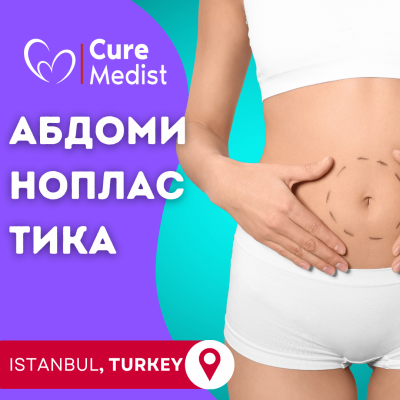Tummy tuck, also known as abdominoplasty, is a cosmetic surgical procedure aimed at improving the appearance of the abdomen. It involves removing excess skin and fat, and in many cases, restoring weakened or separated muscles to create a smoother and firmer abdominal profile. Here’s a detailed overview:
What is a Tummy Tuck?
A tummy tuck is designed to tighten and reshape the abdominal area, making it flatter and more toned. This procedure is popular among individuals who have loose or sagging skin due to aging, pregnancy, significant weight loss, or hereditary factors.
Types of Tummy Tucks:
- Full Tummy Tuck:
- Incision: A horizontal incision is made between the pubic hairline and the belly button. Sometimes, a second incision around the navel is necessary.
- Procedure: The surgeon repairs and tightens the abdominal muscles, removes excess skin, and repositions the belly button.
- Mini Tummy Tuck:
- Incision: A smaller incision is made just above the pubic area.
- Procedure: This is less extensive, focusing on the area below the belly button. Muscle repair is usually minimal or not required.
- Extended Tummy Tuck:
- Incision: The incision extends beyond the hips, around the lower back.
- Procedure: In addition to the full tummy tuck procedure, this addresses the flanks or love handles for a more comprehensive contouring.
Indications for a Tummy Tuck:
- Excess Fat and Skin: Presence of stubborn fat deposits and loose skin that do not respond to diet and exercise.
- Separated Muscles: Diastasis recti, a condition where the abdominal muscles have separated, often due to pregnancy.
- Post-Pregnancy Changes: Women who have had multiple pregnancies may find their skin and muscles stretched beyond the point of natural recovery.
- Post-Weight Loss: Significant weight loss can leave excess, sagging skin that can only be removed surgically.
Procedure:
- Initial Consultation:
- Assessment: The surgeon evaluates the patient’s abdominal area, skin elasticity, muscle tone, and overall health. Measurements and photographs may be taken for medical records.
- Discussion: The patient discusses their goals and expectations, and the surgeon explains the procedure, potential risks, and recovery process.
- Pre-Operative Preparations:
- Anesthesia: The procedure is typically performed under general anesthesia.
- Marking: The surgeon marks the incision sites and areas of excess skin and fat to be addressed.
- Surgery:
- Incision: The surgeon makes the necessary incisions based on the type of tummy tuck.
- Muscle Repair: If needed, the abdominal muscles are tightened and sutured to create a firmer abdominal wall.
- Excess Skin and Fat Removal: The surgeon removes excess skin and fat. Liposuction may be used to enhance contouring.
- Repositioning the Navel: For a full tummy tuck, the belly button is repositioned to a natural-looking location.
- Closing Incisions: The incisions are closed with sutures, skin adhesives, or surgical tape. Drainage tubes may be placed temporarily to remove excess fluids.
Recovery:
- Immediate Post-Operative Care:
- Monitoring: The patient is monitored in a recovery area until they are stable enough to go home or be transferred to a hospital room.
- Dressings and Support: Bandages and a compression garment are applied to minimize swelling and support the abdomen during healing.
- Short-Term Recovery:
- Pain Management: Pain and discomfort are managed with prescribed medications.
- Activity Restrictions: Patients are advised to avoid strenuous activities, heavy lifting, and intense exercise for several weeks. Walking is encouraged to reduce the risk of blood clots.
- Follow-Up Appointments: Regular check-ups are scheduled to monitor healing, remove sutures, and address any concerns.
- Long-Term Recovery:
- Swelling and Bruising: These typically subside over a few weeks to months.
- Scar Management: Scars will fade over time but may take several months to a year to fully mature. Scar treatments and silicone sheets may be recommended.
- Final Results: The final abdominal shape and firmness may not be fully apparent until several months after surgery.
Benefits of a Tummy Tuck:
- Improved Abdominal Contour: Achieves a flatter, more toned appearance.
- Tighter Muscles: Repair of separated abdominal muscles can enhance core strength and stability.
- Enhanced Self-Esteem: Improvement in body image and self-confidence.
- Removal of Stretch Marks: Stretch marks on the lower abdomen may be removed along with excess skin.
Suitability:
- Good Candidates: Individuals in good overall health with realistic expectations who have excess abdominal skin, fat, and/or muscle separation that cannot be addressed through diet and exercise alone.
- Non-Smokers: Smoking can impair healing and increase the risk of complications.
- Stable Weight: Candidates should be at or near their ideal weight, as significant weight fluctuations can affect the results.
A tummy tuck can effectively rejuvenate the abdominal area, providing a smoother, firmer, and more contoured appearance. Consulting with a board-certified plastic surgeon is essential to discuss individual goals, potential risks, and the best approach for achieving the desired results.







